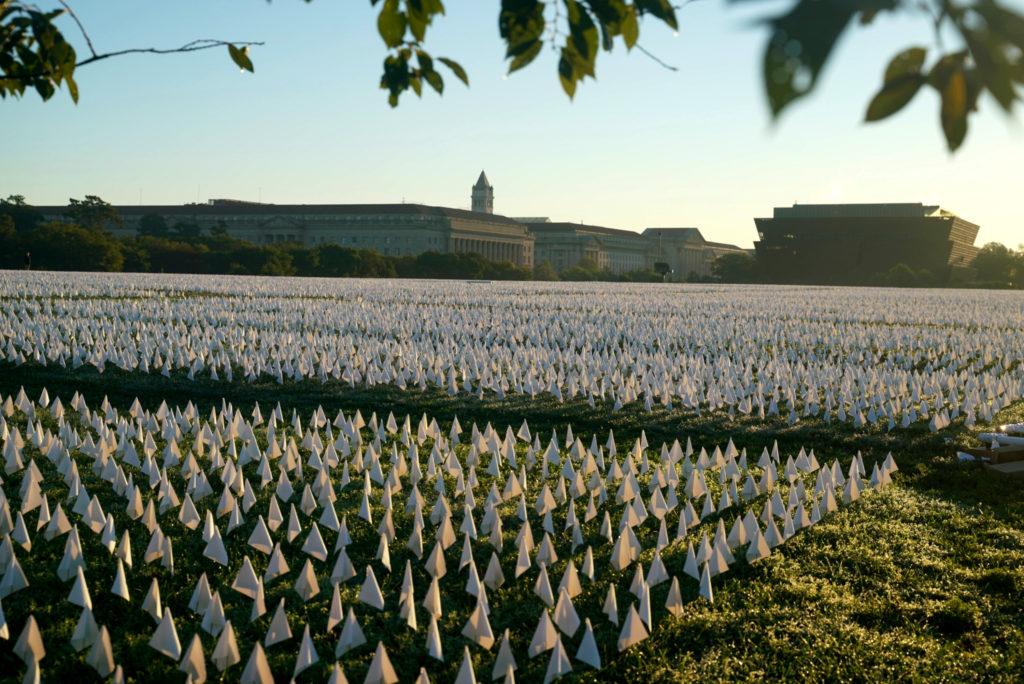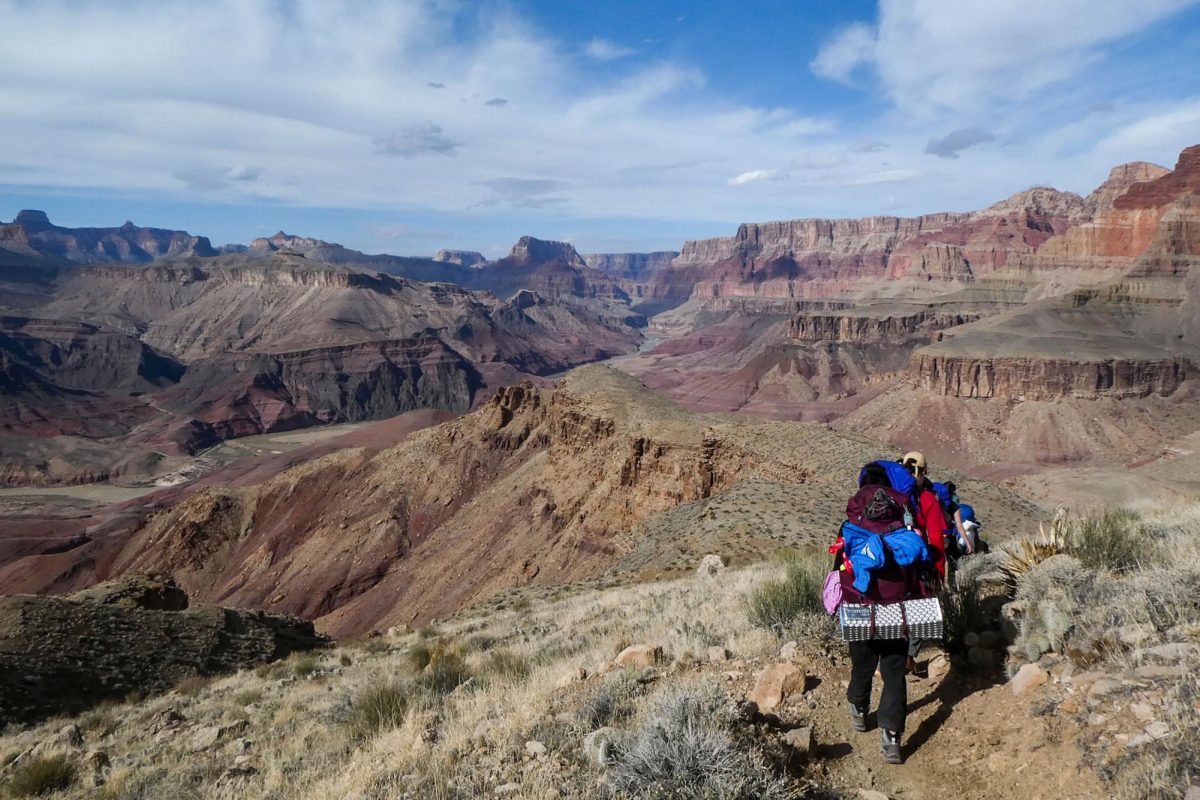A team of students helped plant the hundreds of thousands of white flags last month that covered the National Mall in honor of those who have lost their lives throughout the COVID-19 pandemic.
Six student volunteers planted more than 10,000 of the 600,000 flags on the Mall to memorialize the Americans across the country who died from COVID-19 as part of the “In America: Remember” exhibit – a project launched by a local artist in partnership with the anthropology department last year. Students said they worked to digitize about 15,000 flags on display, including photos of each flag, the personalized messages from loved ones and the spot where families can locate them.
Sarah Wagner, an associate professor of anthropology, partnered with local artist Suzanne Firstenberg last year to launch a research project called “Rituals in the Making,” studying how humans grieve and remember their loved ones who died from the coronavirus.
Wagner recruited undergraduate students in her anthropology classes to help digitize the personalized messages that families of the victims could write on the flags. The flags were located at Robert F. Kennedy Stadium before the area ran out of space as the number of coronavirus deaths rose too high.
“I just heard your favorite song on the radio right before I heard that you passed, and I was thinking about you,” one flag read.
Erin Anderson, a sophomore volunteer, said the project’s workers bridged the gap between the physical exhibit and the digital site with uploaded images of the physical flags. She said the images provide a “graveyard” where families can visit and leave flowers.
“Sometimes I read a lot of messages, I was always around the flags, and it was just so heartbreaking to really understand that it’s more than just a big number that tallies up every day,” she said. “We always look at the numbers, we always hear about the numbers, but we don’t always hear about the stories.”
Anderson said she volunteered for the project as a “geo-locator” – someone who locates flags by their ID number and transfers the messages on them to the exhibit’s website.
“It was really meaningful to a lot of different people, especially because I think that we were able to recognize that a lot of people who lost loved ones during the pandemic didn’t get to have some kind of a celebration of life for their loved ones, some kind of a funeral,” she said.
Anderson said she hopes the exhibit implored visitors to take safety precautions like wearing masks and getting vaccinated to stop the spread of the coronavirus. She said the exhibit closed last Sunday, and the Smithsonian Institution will eventually store the flags from the exhibit.
“What I want people to walk away with from this is that this was horrible, and it still is, and we’re still losing people,” she said. “But we can slow it down. We can even stop it.”
Victoria Ravel, a junior volunteer, said she started work on the project last fall when it was progressing on a smaller scale, with 165,000 flags outside RFK Stadium. She said geo-locators used an app on their phones to take photos of personalized flags on the Mall and upload them on the website so family members can find their ID numbers and view an image of the flag.
She said some of the messages were from children who lost loved ones to COVID-19.
“It was super heartbreaking,” she said. “And then you have the ones that were just from children, like babies, it’s so upsetting. Most of the messages were just goodbyes, ‘We miss you,’ ‘Hope this is all over soon,’ and stuff like that.”
She said while volunteering at the exhibit, she realized the impact of coronavirus across multiple generations and felt “immense sadness” hearing from families who visited the exhibit to pay their respects to loved ones.
“I just hope people can learn from this and become more selfless because this is the first time we’re experiencing this as a population that your personal actions can kill somebody else,” she said. “So I hope that our generation realizes that it is important to be selfless especially during a pandemic.”
Sophomore volunteer Alexandra Goldbeck said she became a geo-locator creating digital submissions of physical flags. She said the exhibit offered a place for families who lost loved ones and could not hold funerals because of COVID-19 safety protocols to take an opportunity to grieve.
“The biggest thing is that people are now able to do some sort of the grieving process,” she said. “I think for most Americans 700,000 plus deaths of COVID-19 is hard to imagine, but to walk down to the Mall or to see a picture of all those flags, it kind of hits you like how many people truly died from COVID-19”








